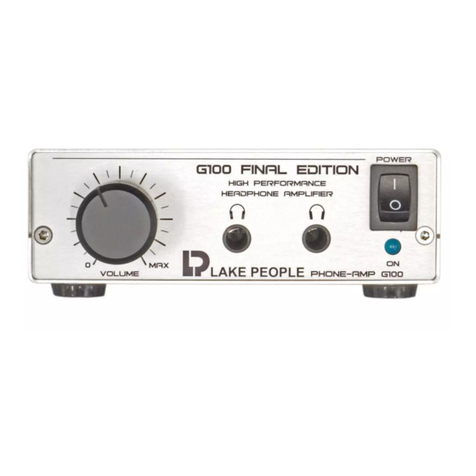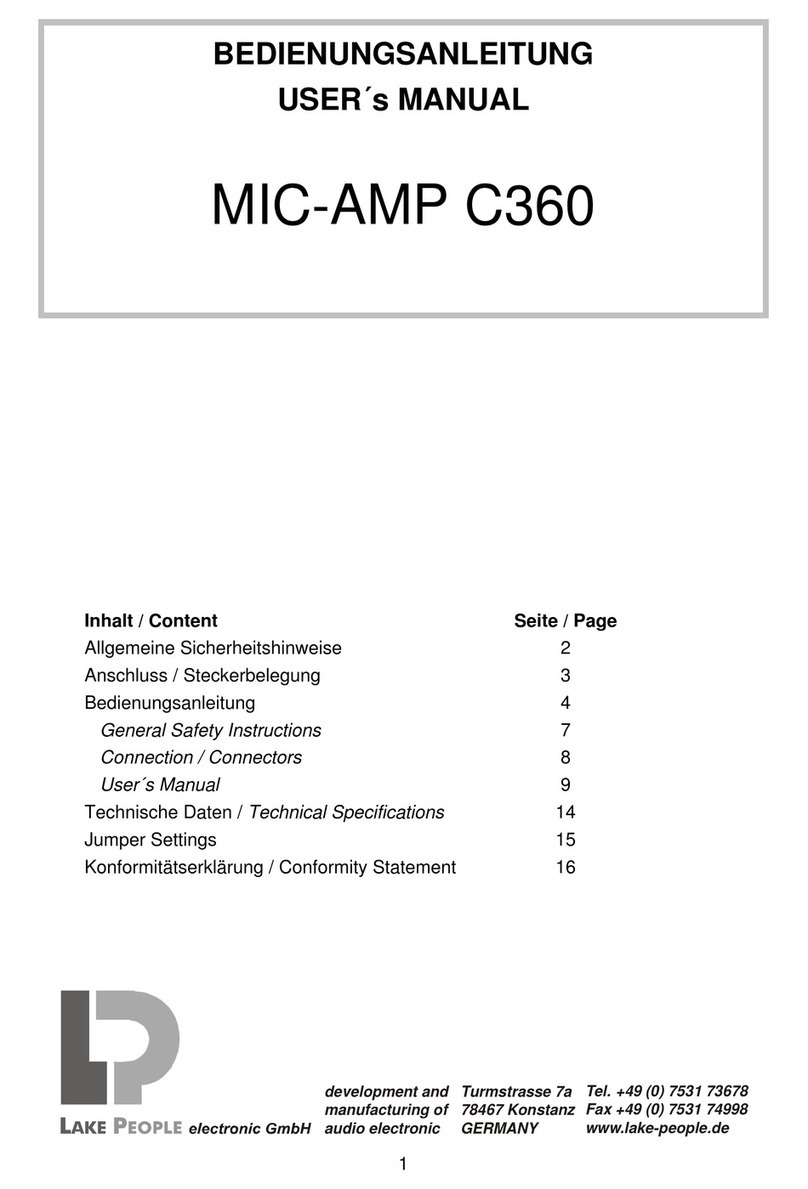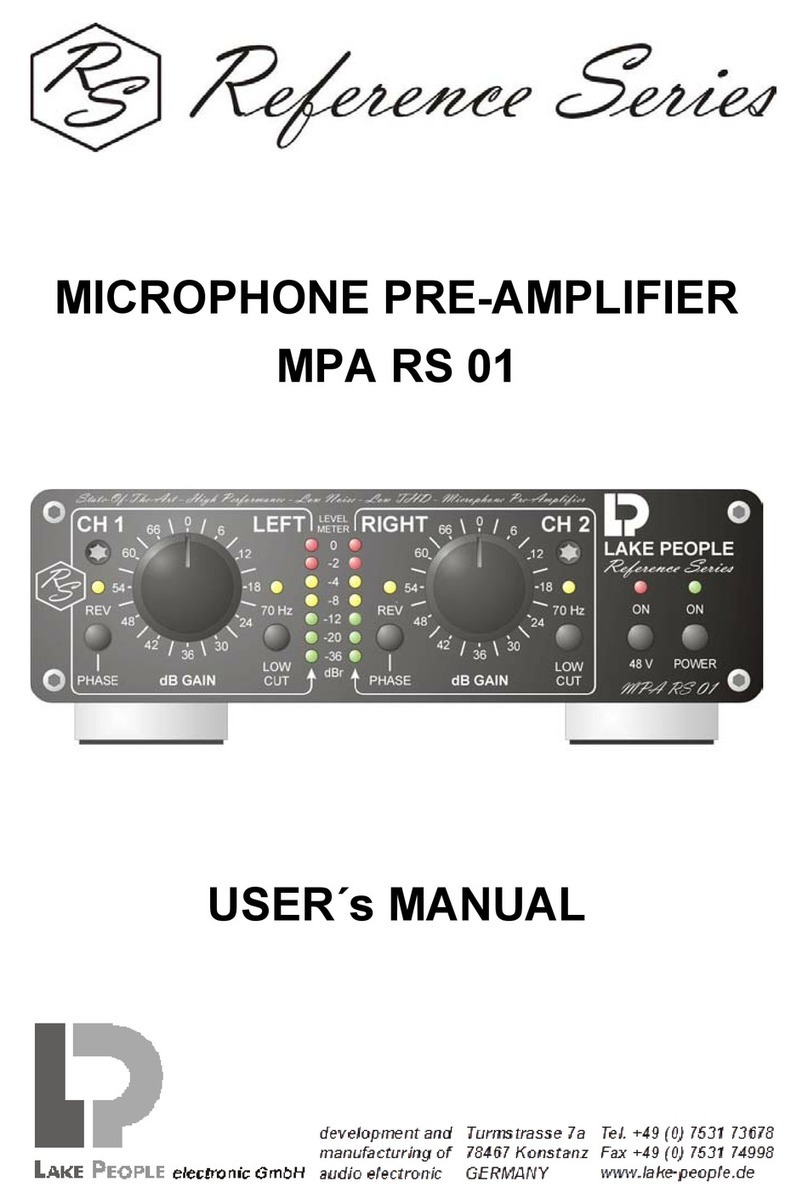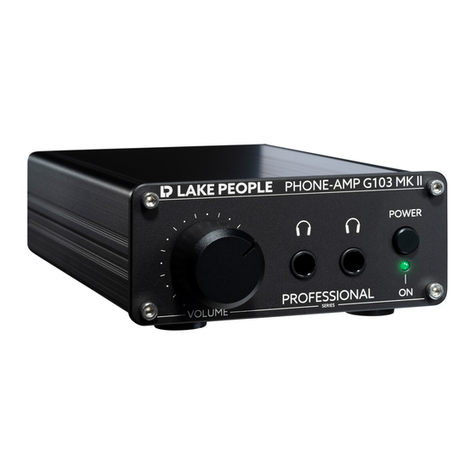
GENERAL INFORMATION
VIOLECTRIC DHA V590 contains an excellent D/A Converter with a Resampling/Reclocking
function, a first-class Preamplifier and a high-grade stereo balanced Headphone Amplifier designed
to drive low-, medium- and high-Z loads (16...600 ohms) as usually represented by high-quality
headphones.
Because of its four built-in amplifiers and the front mounted 4-pin XLR socket it is a real balanced
amplifier and the four-pin socket is not only a convenience feature.
Due to its specific, highly variable, low-noise and low distortion circuit design especially optimised
for dynamic and orthodynamic headphones, DHA V590 fulfils even highest demands.
Features:
-3 analogue stereo inputs, input impedance 10 kOhm, max. level +21 dBu
-1 x balanced via Neutrik XLR, gold plated
-2 x unbalanced via RCA sockets, gold plated
-4 digital inputs
-1 x optical via (Tos-Link), PCM, up to 24 Bit, up to 96 kHz
-1 x coaxial via RCA, PCM, up to 24 Bit, up to 192 kHz
-1 x balanced via XLR, PCM, up to 24 Bit, up to 192 kHz
-1 x USB, PCM, up to 32 Bit, up to 384 kHz, DSD 64 - 256
-All inputs switchable from the front
-LEDs for the activated input, PCM or DSD format, resampling
-32 Bit Resampling / Reclocking with 176 dB dynamic range, 5 modes: Off, x 1, x 2, x 4, Best
-Femto-Clock source for Resampling / Reclocking (phase jitter 80 x 10-15)
-32 Bit Double-Mono D/A Converter (2 converters per channel) with typ. 123 dB dynamic range
-PRE-GAIN = sevenfold gain/attenuation -18 / -12 / -6 / 0 / +6 / +12 / +18 dBr
-4 Discrete-design power amps with 16 transistors per channel
-Extremely low output impedance
-1 x 4-pin XLR connector, Neutrik, gold plated
-2 x TRS phone jacks, Neutrik, silver plated
-Balanced and unbalanced line outputs via XLR and RCA connectors, gold plated
-Line outputs pre/post (fixed/variable = w/o volume control) switchable
-Line output level with sevenfold gain/attenuation -18 / -12 / -6 / 0 / +6 / +12 / +18 dBr
-Alps RK 27 motorized volume control
-optional (DHA V590 PRO) reed relay volume control with 256 steps of 0,4 dB each
-Alps RK 27 balance control
-Output management: headphones active / line-out active / both active / none active (mute)
-LEDs to display the activated outputs
-Remote control for volume, input selection, output selection, resampling, mute
-52 transistors, 24 High Quality Audio Op-Amps in the signal path
-High-grade MKP capacitors in the signal path
-0,1 % und 1 % Metallfilm resistors
-Large filter capacity (> 35.000 uF)
-delayed relay-based headphone output during power on / instant cut-off for power off
-Protective circuits for overload, DC, frequency range, etc.
-2 x toroidal transformers 25 + 25 W
-Rugged Aluminum case, black anodized
-8 mm massive Aluminum front panel






































